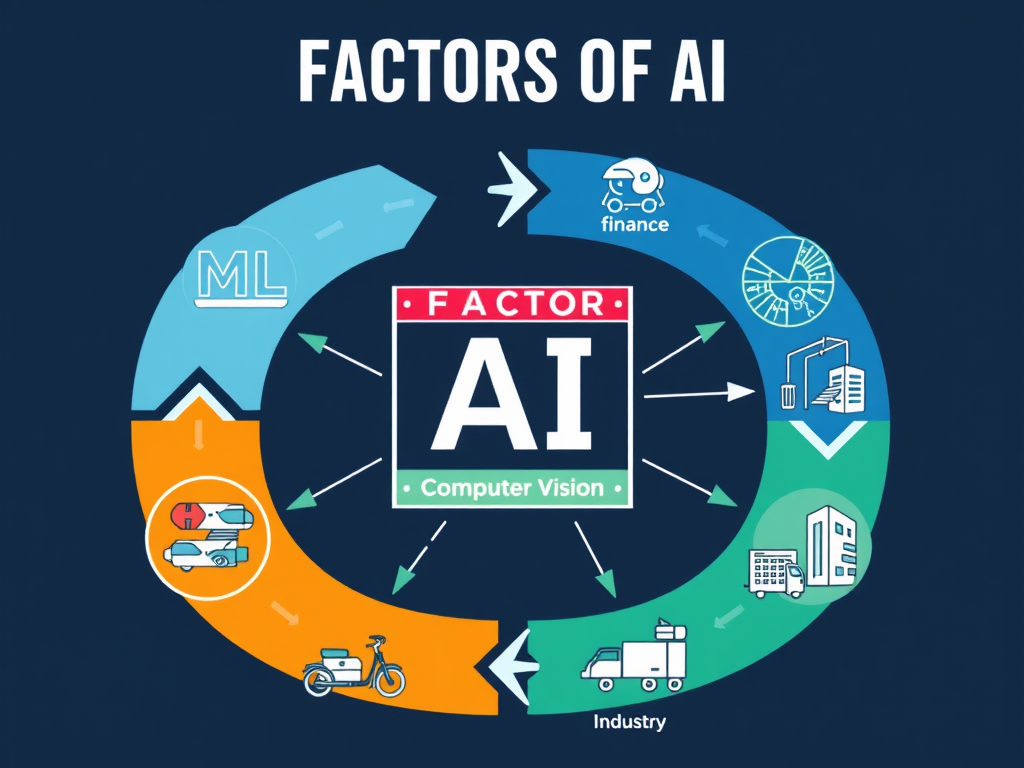
The Ultimate Guide: An Introduction to AI: What Is It?
Introduction
AI’s significance surges as it reshapes our world, and grasping it starts with An Introduction to AI, which is quite crucial nowadays, apparently. An introduction to AI helps make sense of and adapt to algorithms that recommend favorite tunes and chatbots that engage in eerily human-like conversations. AI-curious folks in the USA or UK and students alike get a foundation to question and engage with ubiquitous tech via An Introduction to AI. We’ll dissect it thoroughly here, breaking down basics alongside recent breakthroughs and what that entails for human existence subsequently. Stay with me, and let’s whip up AI into something that gets you pretty stoked and utterly bewildered simultaneously.
What is AI?
Artificial Intelligence (AI) is the emulation of human cognitive functions in computers and machines, allowing them to execute tasks that usually necessitate human reasoning and decision-making. With the swift progress in technology, An Introduction to AI: What does it mean? helps demystify its complexities.
Artificial Intelligence (AI) includes a range of fields, such as machine learning, natural language processing, and robotics. In basic terms, it enables machines to learn from their experiences, adjust to new information, and perform tasks that previously needed human intelligence. This serves as an exploration of An Introduction to AI: What is it? This will guide you through the essential principles, effects, and potential future developments.
How Does AI Work?
Artificial Intelligence operates by utilizing algorithms that are specifically crafted to examine data, identify patterns, and facilitate decision-making. The core process of AI involves
• Data Collection: Systems gather vast amounts of data from various sources, such as user interactions or sensor inputs.
• Data Processing: Artificial intelligence algorithms analyze this data to identify significant features and patterns.
• Education: Machine learning algorithms leverage data for training, gradually improving their performance as time progresses.
• Decision Making: Once trained, AI applications can execute decisions or predictions based on new inputs.
AI technologies, such as chatbots and virtual assistants, illustrate this process clearly. They accurately address inquiries by analyzing user inputs and gaining insights from previous interactions.
Applications of AI Today
Artificial Intelligence drives numerous applications across various sectors, improving efficiency and enhancing capabilities. Key areas include:
• Healthcare: AI aids in diagnoses, personalized treatment plans, and robotic surgeries, leading to improved patient outcomes.
• Finance: Financial organizations employ artificial intelligence for the purposes of fraud detection, risk evaluation, and algorithmic trading.
• Entertainment: Streaming services employ AI algorithms to recommend content tailored to individual preferences.
• Transportation: Autonomous vehicles employ artificial intelligence to navigate securely and effectively, with the potential to transform both personal and public transportation.
This variety of applications highlights the omnipresence of AI in modern life, showcasing its transformative potential.
Benefits and Challenges of AI
Although AI provides many advantages, it also brings about specific challenges. Key advantages include:
• Increased Efficiency: Artificial Intelligence automates routine tasks, allowing human resources to focus on more intricate activities.
• Improved Decision Making: AI offers insights based on data, facilitating superior strategic decisions.
• Financial Savings: Companies benefit from lower operational expenses due to automated procedures.
Nevertheless, issues like ethical dilemmas, job loss, and biases present in AI systems emerge. Ensuring responsible AI development involves addressing these issues while harnessing its positive aspects.
Future of AI
The future of AI appears promising, with advancements continually reshaping various sectors. Potential developments include:
• Greater Integration: AI will increasingly integrate into everyday devices, improving user experiences.
• Enhanced Personalization: Advanced algorithms will enable truly customized solutions for individuals and businesses.
• Improved Human-AI Collaboration: Future AI systems will work alongside humans, augmenting capabilities rather than replacing jobs.
As An Introduction to AI: What Is It? reveals, understanding its evolution helps prepare us for an AI-enhanced future.

The Ultimate Guide: An Introduction to AI: What Is It?
Conclusion
AI drastically transforms our everyday lives, from healthcare to finance and beyond. As we delve into An Introduction to AI: What is it?, it is vital to grasp its implications, applications, and future impacts. Embracing AI responsibly will lead to innovation that enhances the quality of life for people in both the UK and the USA. Continuing to explore AI usage positions individuals and businesses to maximize its potential, ensuring a positive trajectory for society as a whole.
Recommendation
To dive deeper into the world of AI, consider exploring reputable online courses that cover topics ranging from machine learning to ethical implications. Engaging with AI communities and forums can provide real-world insights and foster connections with fellow learners.
Additionally, keeping updated with the latest industry trends through blogs and podcasts ensures you stay informed about innovations within the AI landscape. Start small by implementing AI tools in your daily tasks to appreciate their benefits firsthand. Engaging actively with AI will position you ahead in both personal and professional realms.
Frequently Asked Questions
1. What is the best example of AI in everyday life?
Ans: Smart assistants like Alexa and Google Assistant offer easy examples of AI, handling tasks and answering queries efficiently.
2. Can AI learn without human input?
Ans: Yes, AI can learn autonomously through machine learning by analyzing vast datasets without direct human intervention, making it adaptable.
3. Is AI a threat to jobs?
Ans: While AI may automate some jobs, it also creates new roles and industries, allowing humans to focus on more complex and valuable tasks.

